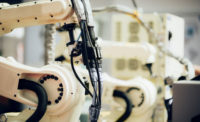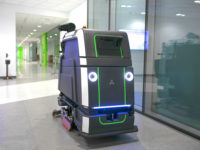Robots: Powering productivity and safety

Credit: Getty Images
Robots are set to become a game changer for health and safety across many industries, such as manufacturing and construction where the number of serious injuries and fatalities could be significantly reduced.
Utilizing robots for automation
Some machines and processes pose greater safety risks than others. However, emerging technologies within robots and artificial intelligence (AI) can improve this by taking on jobs that are more dangerous for humans.
Guidance Automation had conducted a survey which revealed 73% of businesses in manufacturing think automation is key for progressing the industry. This can benefit worker safety and make daily executables more efficient across the board.
As technology evolves, robots can be built and programmed for dangerous machines and practices, which will reduce the numbers of injuries occurring to the human workforce. This could allow these human workers to retrain to make their role more focused on maintaining the robot or working alongside it to carry out the process effectively.
Collaboration with robots
Despite having robots in the workplace, the workplace will still require a human element to be effective and efficient. This is why as good as it is to introduce robots to automated processes, they primarily purpose is to make human jobs safer. And advancements in onsite technology could do just that.
One example is attaching sensors to machinery or certain areas around the workplace that are dangerous. In the event they come into proximity of a dangerous machine, the sensor could be tripped and switch off the machinery. Alternatively, if there’s an area that requires a specific safety item to access, an alarm could be activated to alert workers on what they require to enter.
Robotics provide abilities to remotely operate machinery and vehicles. This allows for greater control of how they operate without putting a human worker at greater risk.
Collaborating with robots increases safety through automation. Welding cobots are designed to collaborate with humans in a shared working environment. They are equipped with advanced safety features that enable them to detect humans in close proximity to avoid collisions.
Using robots for training and visualizing dangerous environments
Robots can also provide great opportunities within training scenarios as it allows trainees to visualize and identify risks before entering a workplace which will help reduce accidents and injury rates.
Introducing drones are a fantastic solution for training and visualization as they can be remotely flown into inaccessible areas and their built-in cameras allow operators to take notes of problems. That way, when it comes time to addressing the problem, operators know exactly what’s needed and can therefore prepare appropriate health and safety measures for themselves and colleagues.
Whilst not being robots, virtual and augmented reality helmets can be extremely useful for safety training. Having these headsets synced up so workers can be put in scenarios to analyze dangers that can help them prepare for the real thing, which will help to reduce potential accidents and injuries.
What’s commonly discussed around robots are the fears of them replacing humans. This is not the case, In fact robots will less likely force humans out of work. If anything, they’ll create more opportunities for workforces to allow better integration with technology and how it can help manage processes.
For any robotics or AI being introduced to a stage of a particular process, it’s essential to provide adequate training to ensure the workforce have the appropriate knowledge to be able to adjust or update systems, should they need to. That way, safety is ensured, and everything continues to run smoothly.
Sources:
https://www.welding-alloys.com/services/engineered-wear-services/application-methods/hardfacing-applications/
https://www.uk-manufacturing-online.co.uk/2022-the-year-of-automation/
Looking for a reprint of this article?
From high-res PDFs to custom plaques, order your copy today!





